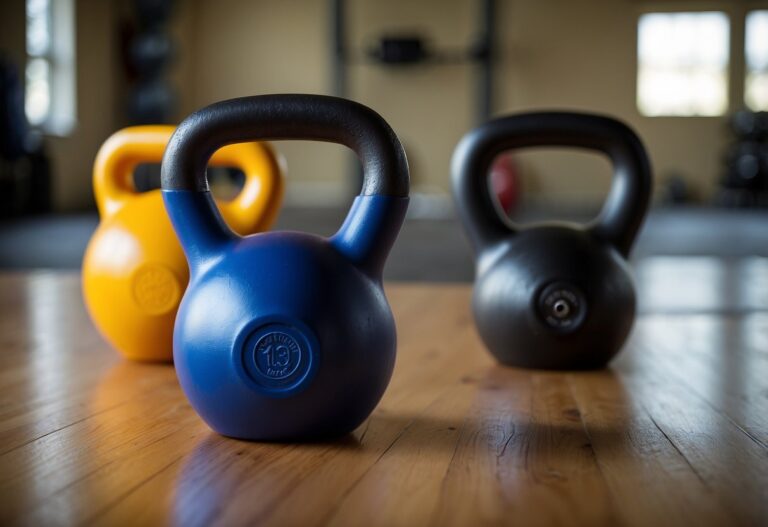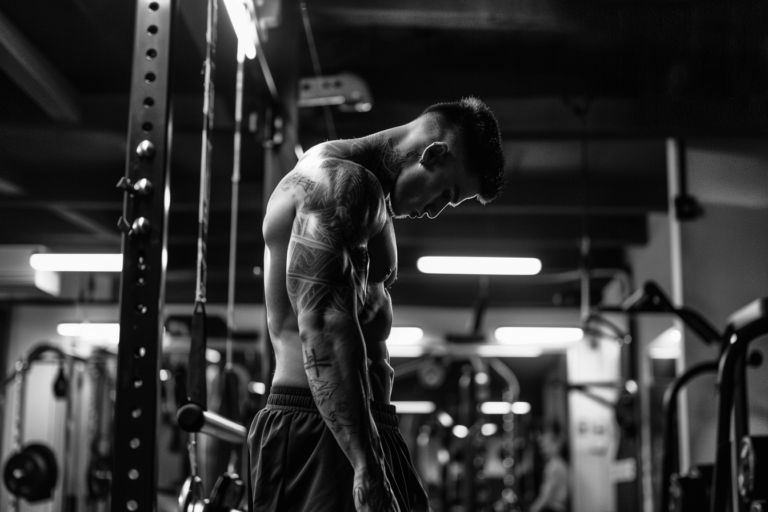Have you ever found yourself standing in the gym, eyeing the barbell, and wondering whether you should load it up for squats or deadlifts to really hit those glutes? You’re not alone!
This is a hot topic among gym-goers aiming to build strength and shape in their lower body. Deadlifts and squats are both powerhouse moves for glute development, but which one is better for a firmer, stronger backside?
As someone who’s spent plenty of time experimenting with both exercises, I’ve had my fair share of trial and error in the quest for the best glute workout. In this post, we’ll look at the mechanics of each exercise, and get a better understanding of how they impact our beloved glute muscles.
So, whether you’re a fitness newbie or a seasoned lifter, let’s look at this together and settle this debate once and for all. Get ready to give your glute routine the edge it’s been waiting for!
Key Things to Know:
- Deadlifts and Squats for Glutes: Both exercises are essential for building glute strength and mass. Deadlifts engage the entire posterior chain, while squats focus on glute and quad development.
- Muscle Anatomy and Activation: Understanding the anatomy of the gluteal muscles (maximus, medius, minimus) helps in optimizing workouts. EMG studies show that squats may activate the gluteus maximus more effectively.
- Proper Technique and Safety: Emphasizing correct form in both deadlifts and squats is crucial for muscle engagement and injury prevention. Each exercise demands specific attention to movement patterns and load distribution.
- Balanced Approach for Best Results: Incorporate both deadlifts and squats into your routine, along with glute-specific exercises like hip thrusts. Ensure a comprehensive workout plan with proper warm-up, mobility work, nutrition, and recovery for optimal glute development.
Anatomy of the Glutes
Understanding your gluteal muscles can provide valuable insights into the important functions they play in your body. In this article, we will discuss the composition of these powerful muscles and why maintaining their strength is about more than just appearance.
The Gluteal Muscles And Their Functions
The gluteal muscles are a group of three muscles constituting the buttocks: the gluteus maximus, gluteus medius, and gluteus minimus.
The gluteus maximus is not only the largest but also the most superficial of the trio, playing a major role in hip extension, thrusting your hip forwards as you walk or run. Its sheer size and power facilitate complex movements, from sprinting to climbing stairs.
Shifting focus, the gluteus medius and gluteus minimus lie beneath the maximus and serve primarily for pelvic stability. These muscles are key stabilisers as they help maintain balance when you stand on one leg and control the movement mechanics of the femur, aiding in activities like side-stepping or transitioning from sitting to standing.
Strong Glutes For Overall Health and Fitness
Think of your glutes as the bedrock of your movement mechanics.
Having strong gluteal muscles is important for maintaining a healthy body. These muscles support your posture and alignment, which helps prevent problems like lower back pain and knee injuries.
When your glutes are strong, they can handle daily tasks and physical activities more easily, reducing the risk of strain on other muscles. By strengthening your glutes, you’re improving your body’s ability to perform tasks like walking, lifting, and changing direction quickly.
Deadlift Overview
When you step into the gym to enhance your glute development, deadlifts are a prime choice, engaging not only the glutes but also the hamstrings, back, and core. Let’s break down the components of deadlifts, look at the technique of both, and understand their benefits and common blunders.
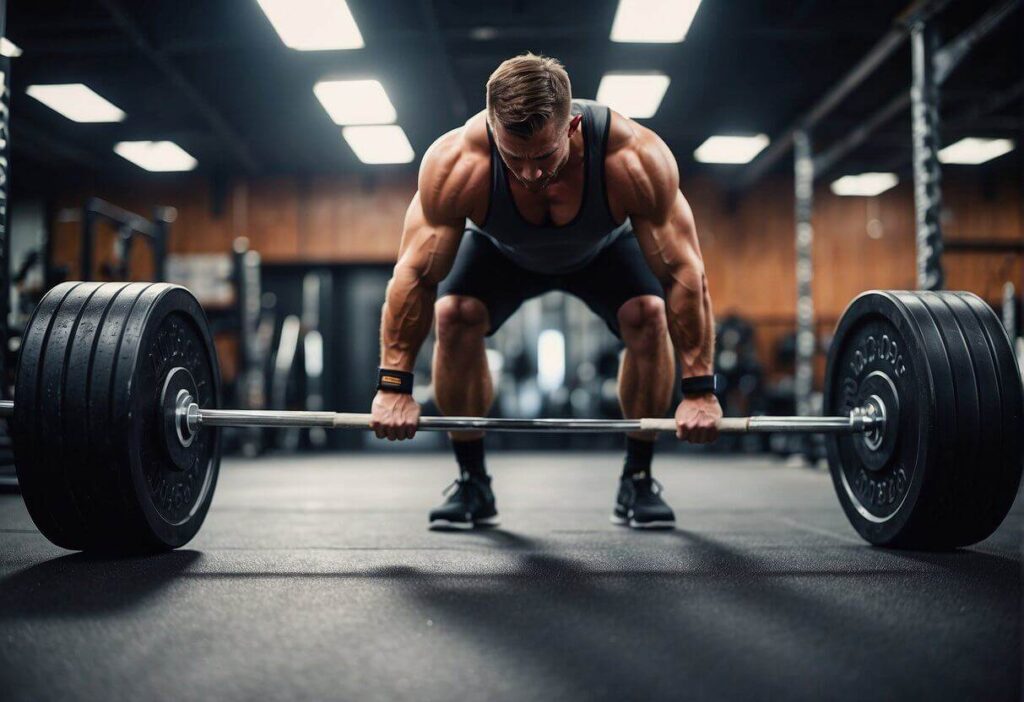
Types of Deadlifts
Deadlifts come in various forms, each targeting the body slightly differently.
You’ve likely heard of the conventional deadlift, where your feet are shoulder-width apart and you lift a barbell from the ground with a hip hinge movement.
The sumo deadlift, with a wider stance and feet pointed out, changes the focus slightly, often reducing stress on your lower back while still engaging the posterior chain effectively.
Then there’s the Romanian deadlift (RDL), which emphasizes the hamstrings and glutes and involves less knee engagement, maintaining more tension in the muscles throughout the lift.
Deadlift Techniques
Proper form is crucial to reap the full benefits of deadlifts and prevent injuries, especially to your lower back.
You want to ensure you’re keeping a neutral spine, mastering the hip hinge technique, and using both a grip and stance that feels strong and stable.
Don’t underestimate the role of your core; keeping it tight protects your spine and improves the power of your lift.
The range of motion is also key; you should be moving smoothly through the entire lift to maximise muscle engagement.
Deadlifts for Glute Development
If it’s the glutes you’re after, you’ll be happy to hear that deadlifts are phenomenal for building both strength and mass in this area.
By focusing on the hip extension part of the movement, you’re directly working the glute muscles. Want an enhanced emphasis on your glutes? Then the RDL might just be your best bet, given its ability to keep constant tension on the gluteal muscles.
Benefits of Deadlifts
Deadlifts are a full-body strength powerhouse. Engaging your posterior chain, including glutes, hamstrings, and the entire back, they contribute to both muscular hypertrophy and overall power development.
Moreover, they are essential for functional strength – that’s the kind of strength you use in real-world lifting scenarios.
Common Deadlift Mistakes
Be wary of pushing your hips too early or too late – this can lead to lower back pain or placing undue stress on your knees and hips.
The correct form is paramount; never sacrifice it for heavier loads. Keep your back from rounding and avoid jerky movements; instead, strive for a fluid range of motion.
And while it’s tempting to lift heavy, make sure to progress responsibly to prevent any strains or injuries.
Incorporating deadlifts into your workout routine can contribute greatly to your glute development, provided you perform them with the correct form and focus on the movement patterns that best target those muscles.
Squat Overview
With squats, you should understand that they’re not just a workout for your glutes, but a compound movement engaging quads, hamstrings, and core. Let’s look at the different aspects that make squats such a versatile and effective exercise.
Types of Squats
Squats come in various forms, each targeting your muscles slightly differently.
The bodyweight squat is a fantastic entry point, focusing on form and range of motion. For those seeking more resistance, weighted squats like the front squat and back squat add intensity, engaging more of your leg and core muscles.
Hip thrusts can complement these by specifically targeting the glute muscles.
Squat Techniques
Proper form is critical to get the most out of your squats and prevent injury.
Start with feet shoulder-width apart, ensuring your stance allows for stability. As you descend, aim for knee extension in line with your toes and keep your heels planted.
The goal is a full squat pattern with a range of motion that feels natural and maintains your balance.
TIP: Try using a weight plate or similar to raise your heels off the floor. This will help you maintain balance and sit deeper into the squat.
Squats for Glute Development
Squats are renowned for their ability to develop leg strength, but they especially excel in building glute muscles.
When performing squats, a deeper range of motion and incorporating variations like the back squat can increase the activation of glute and hip extensor muscles, essential for muscle mass and hypertrophy.
Benefits of Squats
Beyond enhancing your glutes and quads, squats contribute to overall strength, bone density, and can even improve your vertical jump height.
Regular squatting supports bone health, potentially reducing the risk of osteoporosis, and strengthens the stabilising muscles, thus improving your balance.
Common Squat Mistakes
Many people experience knee pain or back pain due to incorrect squat form.
Avoid common pitfalls such as letting your knees cave in, rounding your back, or shifting your weight onto your toes. Always focus on keeping your core engaged and moving through the squat with control.
Comparing Deadlifts and Squats for Glutes
When it comes to developing the glutes, the two heavyweight champions often discussed are deadlifts and squats. Each exercise has its advocates, and understanding their effects on muscle activation, functional application, and safety can guide your training choices.

Muscle Activation and EMG Studies
Deadlifts and squats activate the glutes to varying degrees.
Electromyographic (EMG) studies suggest that while both exercises work the glutes, the squat may yield higher levels of gluteus maximus activation, which is crucial for targeted muscle growth.
Research detailing gluteus maximus activation during common strength exercises indicates that different intensities and variations can alter the level of muscle engagement.
Functional Benefits and Movement Patterns
Each exercise mimics a fundamental movement pattern: deadlifts replicate the hip hinge, while squats reflect the squat pattern. These patterns are essential as they translate to everyday movements and functional exercise.
Squats emphasise the quads and can support everyday activities like sitting and standing, whereas deadlifts target the entire posterior chain, including hamstrings and the back, relevant for activities involving lifting and pulling.
Injury Prevention and Safety Considerations
Proper form is critical in preventing back pain and knee pain.
A squat performed correctly will keep the knees in line and distribute the load effectively, reducing stress on the joints.
Conversely, deadlifts demand attention to back alignment to avoid strain.
Both exercises, when performed with proper form and suitable progression, can strengthen muscles around the joints and contribute to injury prevention.
Training Variability and Exercise Selection
Your goals should drive your exercise selection.
If you’re looking to increase muscle mass in the glutes specifically, squats might be your go-to, echoing the sentiments of many a personal trainer.
But for overall lower body strength and development of the posterior chain, incorporating deadlifts offers comprehensive benefits.
Training variability is also key in preventing plateaus; alternating between deadlifts and squats can elicit continued progression and adaptation.
Exercise Supplementary Information
When striving for glute growth, it’s crucial to consider more than just the heavy lifts. The warm-up, accessory movements, nutritional intake, and overall programme structure each play a significant role in your success.
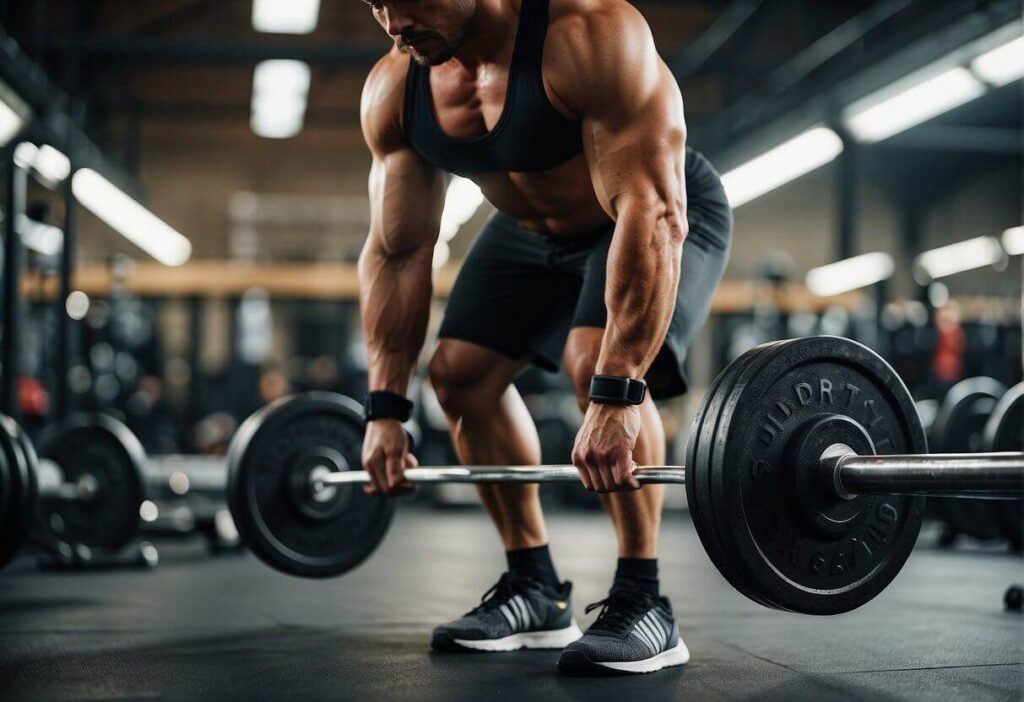
Warm-Up and Mobility Work
A dynamic warm-up is key to preparing your body for intense training like deadlifts or squats.
Starting with mobility exercises specifically targeting the hips and hip flexors can enhance your deep squat position. You might incorporate lunges to activate the quads and hip thrusts to wake up the glutes before tackling your main lifts.
Accessory Exercises and Variations
Incorporating accessory exercises such as Romanian deadlifts and lunges can contribute to improved muscle mass and strength in the hamstrings, calves, and core.
Leg presses and single-leg movements are complementary and can further encourage muscle development in your glutes.
Nutrition and Recovery for Glute Growth
Your nutrition should support your workout intensity; that means eating enough protein for muscle recovery and growth.
Recovery also extends beyond the kitchen—proper sleep and rest days are equally integral to enhancing muscle mass increase.
Program Design and Periodisation
Building an effective training program—which includes squat variations and deadlifts—requires a balance of training frequency, volume, and intensity.
Periodisation is a smart approach, systematically varying these aspects to optimise gains while reducing the risk of overtraining.
Advanced Training Techniques
When you’re aiming to enhance your glute development through deadlifts and squats, understanding the nuances of advanced training techniques can be a game changer. These methods can help you increase strength, muscle mass, and improve balance and coordination. Let’s explore how you can implement these strategies into your training regimen.

Mechanical Tension and Metabolic Stress
To maximise muscle growth, or hypertrophy, applying the principles of mechanical tension and metabolic stress is vital.
For deadlifts and squats, increasing the weight you lift introduces greater mechanical tension, which is a key driver for strength and size.
By contrast, performing more repetitions at a lower weight until fatigue can create significant metabolic stress, leading to muscular endurance and growth as well.
Neuromuscular Adaptations
Challenging your muscles through compound movements like deadlifts and squats not only builds muscle mass but also contributes to neuromuscular adaptations.
This involves improving the communication between your brain and muscles, enhancing your coordination and power output. Over time, this can lead to more efficient movements and the ability to lift heavier loads.
Olympic Lifts and Explosive Training
Integrating Olympic lifts into your routine can boost your power and speed, which is beneficial not just for lifting but also for activities like running, sprinting, and jumping.
Deadlifts and squats provide a strong foundation for such explosive training, as they incorporate multiple muscle groups and improve overall balance and coordination.
Isolation vs Compound Movements
While compound exercises like squats and deadlifts engage several muscle groups simultaneously, isolation movements target one specific area.
For focused glute development, you may incorporate exercises like glute bridges or hip thrusts, ensuring that your glutes are receiving direct stimulus alongside the compound lifts for well-rounded development.
Conclusion and Best Practices
To ensure effective glute development, let’s focus on the main points of the debate between deadlifts and squats. Both exercises have advantages, but proper execution and integration into your routine are key.
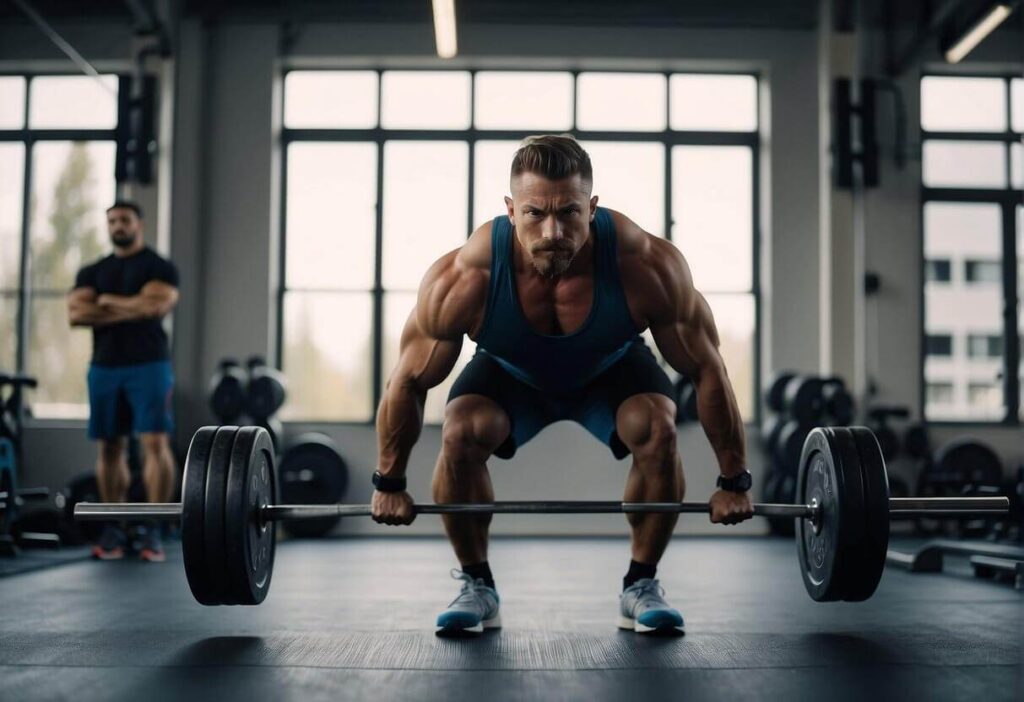
Final Recommendations for Glute Development
For optimal glute development, it’s not a matter of choosing between deadlifts or squats, but rather incorporating both into your workout routine.
Each exercise offers unique benefits and, when combined, they provide a comprehensive approach to strengthening and shaping the glutes.
Best Practices
- Technique Over Weight: Prioritize proper form over lifting heavier weights to prevent injury and ensure effective muscle activation.
- Variability: Incorporate different variations of deadlifts and squats to target the glutes from multiple angles and prevent training plateaus.
- Accessory Exercises: Include glute-specific exercises like hip thrusts and glute bridges to directly target the glute muscles.
- Warm-Up and Mobility: Engage in a dynamic warm-up and mobility work to prepare your body for the demands of heavy lifting.
- Nutrition and Recovery: Support your workouts with adequate nutrition, focusing on protein for muscle recovery, and allow for proper rest and sleep.
In conclusion, both deadlifts and squats have their place in a well-rounded glute development program. By following these recommendations and listening to your body, you can give your glute routine the edge it needs for the best results. Remember, consistency and a balanced approach are the keys to achieving a stronger, firmer backside.



